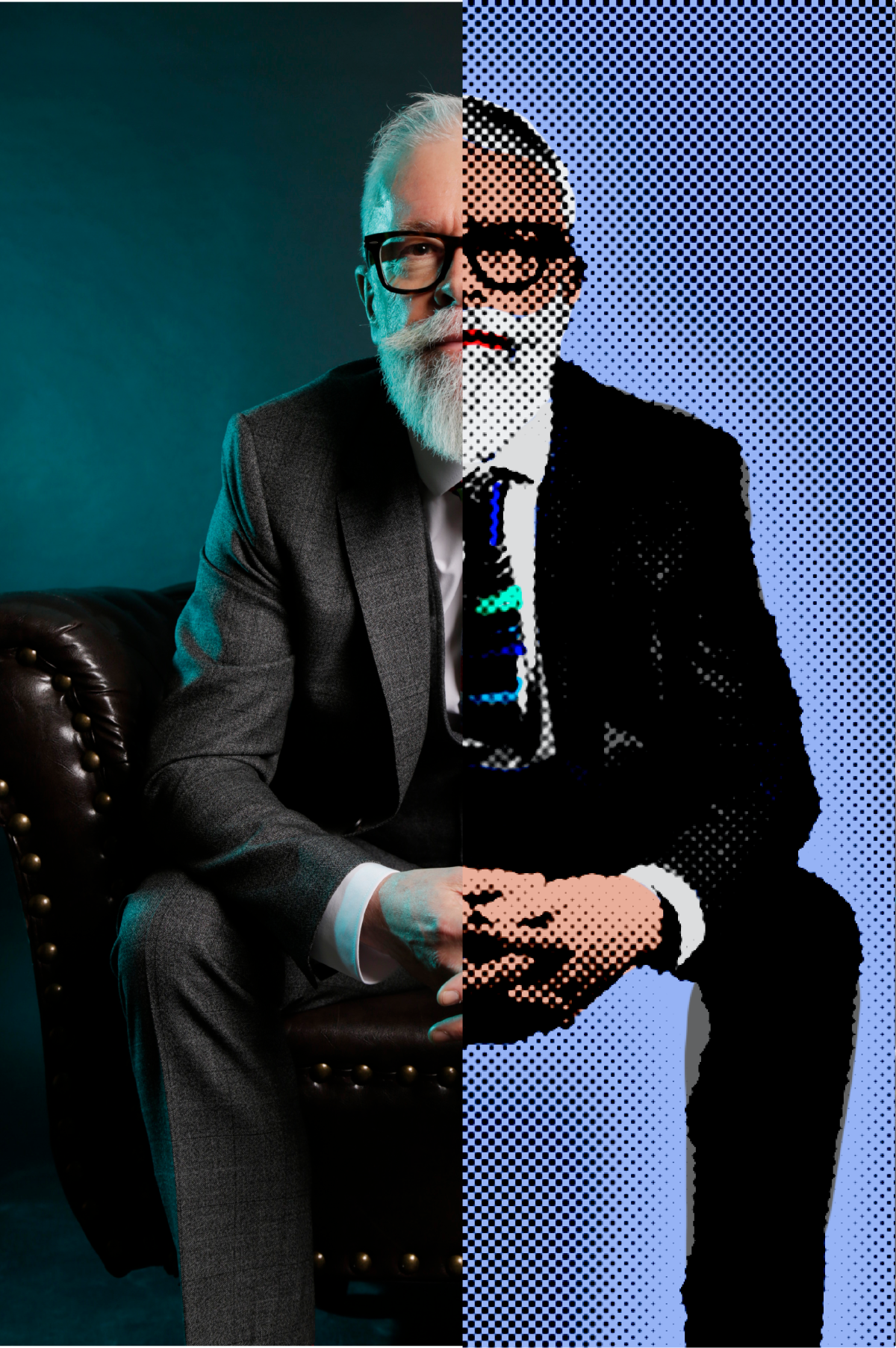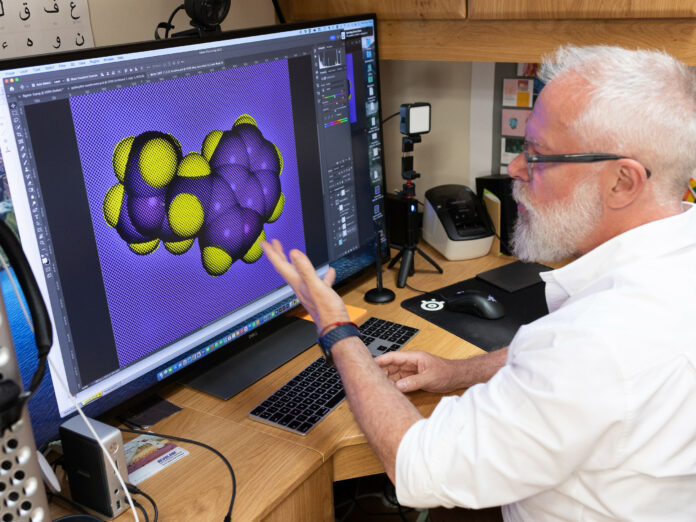By
A Pop Art Revolution
Vibrant colors and bold statements are the essence of pop art. I have taken an unconventional path by turning chemical molecules into captivating artworks and I am excited to share my story and describe my path to scientific pop art. Molecules may seem an unlikely subject for pop art, but they are the hidden heroes of our existence.
From the simplicity of H2O to the intricate structure of DNA, I have transformed these microscopic wonders into unique pop art that transcends scientific boundaries. As far as I’m aware, I am the only practicing physician worldwide who has brought science directly into the vibrant realm of pop art, focusing exclusively on molecular structures.
From Glasgow to the Gallery
I come from an uninspiring working-class background in Glasgow, Scotland. I had no scientific, medical or artistic role models in my early years. Through sheer determination I managed to get into university in Leicester where I studied molecular biology in the ’70s. After this I studied medicine and specialized eventually in hematology, which is the study of blood diseases.
The Pandemic Pause
The recent COVID pandemic was disastrous worldwide but there was an upside for me personally: lockdowns offered a unique opportunity for artistic exploration and gave me time to develop new skills. With reduced work pressures and more time on my hands, I delved into the world of art, bringing molecules to life in ways I had never imagined possible. I also trained in graphic design and medical illustration and became a freelance illustrator. The result was a large series of pop art pieces featuring molecules involved in pain relief, nutrition, hormones, vitamins, and even pleasure molecules—ranging from everyday stimulants (caffeine) to the more taboo recreational substances (LSD and many others).
The Medium of Molecular Expression
My chosen medium is mainly giclée printing (fine art printing), and I find RGB printing perfect to bring out the bright colors I use. Aluminum is also a great medium for printing pop art—from postcard-sized prints to huge glossy prints (2 meters square, or larger). My work is also printed onto coffee mugs, travel cups, Apple watchbands, cell phone cases, cushions and other products. My art takes unconventional subjects, crosses boundaries, whilst at the same time making science accessible and captivating for a broader audience which is one of the goals of my art.
Drew Provan
Educating Through Art
Biochemistry, biology, and chemistry are fascinating subjects despite what our memories of school might be, and I am trying to share that excitement through my art. In effect my pop art not only decorates walls but also serves as a tool for education. By reimagining molecular structures, I am trying to make the molecules more approachable and ignite curiosity about the world we live in.
From Bacterial Viruses to Chromosomes
All artists have their favorite pieces. Mine include the bacterial virus T4, which I worked with as a research assistant in the lab after I left school. I also turned my own chromosomal karyotype into art: I used photographs of my chromosomes I took during an elective period in human genetics in 1982. Because I was preparing chromosome preps from patients, I seized this golden opportunity to capture my own chromosomes. I painted my chromosomes with somewhat bizarre and lurid colors. This image is currently on display in my home and is a great conversation piece!
What’s Next for My Molecular Art?
So far, I have generated around 200 different molecular images, but I am constantly planning new pieces. My idol Warhol’s art is so distinctive because of the skillful screen-printing techniques he used. I am planning to turn some of my most colorful works into large screen-prints. This printing method not only makes the colors much brighter, but each print is an original in its own right; no two prints are identical because the ink is drawn over the canvas by hand each time. The other medium that fascinates me is 3D printing and I have already created some fun artworks featuring 3D printed scientific art.

Drew Provan
The Art-Science Connection
On a philosophical note, I often wonder why it has taken me so long to explore my artistic side. Largely, I guess this was due to the pressures of studying and work. As a junior doctor I had little time for hobbies, and even reading books was a luxury. One misconception I, and many people have, is that we are either scientifically or artistically-minded — the skillsets are so different so surely we cannot be both? But many of our best artists have been doctors or scientists who have written incredible literature or created fine art. I would tell my younger self to try to explore art as I grew up and not leave it all until I retired, although that is fun also and I have no regrets.
Closing Thoughts
Art is for everyone—both in appreciation and creation. As medics and scientists we should explore the fascinating world where science and art converge, bringing molecules to life on the canvas. I would encourage any of my colleagues to start creating whether that be drawing, painting, music, or writing. Start slowly and try not to stress about it. Enjoy the journey!
****************
Drew Provan, MD FRCP FRCPath, is a Consultant Haematologist at Barts & The London School of Medicine & Dentistry, London, UK

Drew Provan
Uncommon Knowledge
Newsweek is committed to challenging conventional wisdom and finding connections in the search for common ground.
Newsweek is committed to challenging conventional wisdom and finding connections in the search for common ground.


